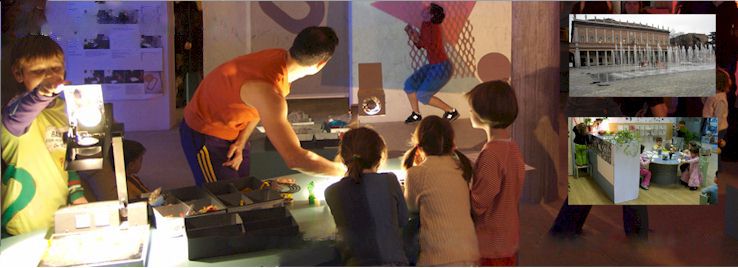Reggio Emilia
Reggio Emilia is a small city in northern Italy. After the second world war citizens of Reggio began to construct their own preschools and educational approach for young children, and they are now in the forefront of international early childhood education.
Since 1999, Sightlines has been the UK reference point for the Reggio Emilia Approach, and is a member of Reggio Children International Network.
The schools were built on the premise to teach children to think for themselves and with an image of the child as rich in potential, strong, powerful and competent. The schools embraced creativity, listening to children, community involvement, democratic citizenship, professional dialogue and documentation of learning processes. There are now 78 municipal preschools and infant toddler centres in Reggio Emilia, and their approach is an inspiration to educators around the world.

Reggio's Approach: some key principles
All children have potential
Our image of the child is rich in potential, strong, powerful, competent and, most of all connected to adults and other children. Loris Malaguzzi
From birth the child has the need and the right to communicate and interact with others. Through energy and curiousity the child constructs his/her own learning.
Children are connected
The child is a member of a family and a community rather than an isolated individual. The child learns through interaction with peers, adults, objects and symbols. Preschool centres are seen as a system of relations embedded in a wider social system.
The reciprocity of children
Children are very open to exchanges and reciprocity as deeds and acts of love which they not only want to receive but also to offer. These form the basis of their ability to experience authentic growth, dependent on the elements listed above, as well as on conflict and error. Carlina Rinaldi
Children are communicators
Children have the right to use many forms of symbolic representation: words, movement, drawing, painting, building, sculpture, shadow play, collage, dramatic play, music (the "hundred languages"). In this way children are able to explore and communicate ideas in many different ways, and are able to link ideas across different media.
The environment is the third teacher
Space is designed to encourage encounters, communication and relationships. There is order and beauty in the organisation of materials; every corner of space has an identity and purpose. The piazza and the atelier are at the heart of the preschool centre.
Educators are partners, nurturers and guides
Educators and artists (atelierista) facilitate children's exploration of themes - short- or long-term projects - and guide experiences of open-ended discovery and problem-solving. They observe and listen closely to children in order to deepen their understanding of the children's ideas and their ways of working together. They reflect in groups to analyse their observations and decide how to further support the children's learning.
Educators are researchers
The educators work together, sharing their observations and interpretations about how the children are exploring and interacting. They develop their own research based around how best to support particular aspects of children's learning.
Documentation as a learning tool
Careful consideration and attention are given to the presentation of the thinking of the children and the adults who work with them. Transcriptions of children's words and dialogues, photographs and drawings are used for groups of adults and children to reflect on the learning that is taking place. The documentation enables children, educators and parents to share each other's learning, not just at the end of a learning process but as an aid to a continuing group idea.
Families as partners
Families have an active role in children's learning experience. They are encouraged to share their ideas and experiences of their children's learning, and are able to see what has been happening in school through documentation and discussions.
“If we believe that children possess their own theories, interpretations and questions, and that they are co-protagonists in their knowledge-building processes, then the most important verb in educational practice is no longer to talk, to explain, to transmit, but to listen.” Carlina Rinaldi (1998)
We have some very useful introductory articles here, to get you started.
For more information please visit the Reggio Children Foundation website, the Reggio Children website, and other places on this website.

